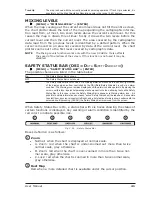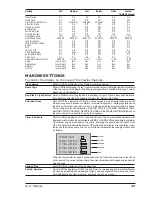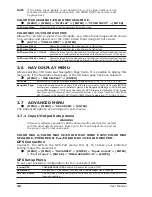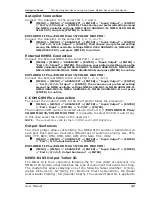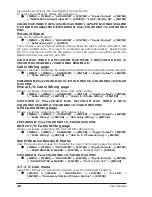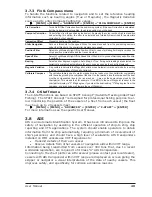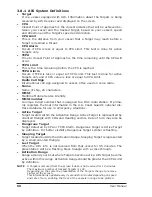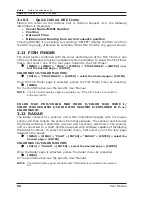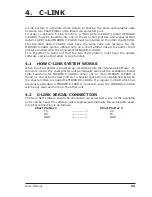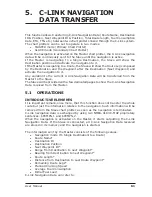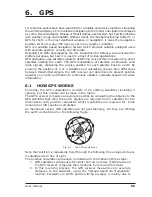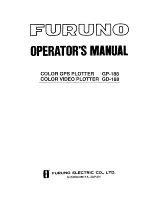
53
User Manual
Press [L
OAD
] to activate the C-Weather Download
: the whole data package
(see the previous "Weather data package" table) is downloaded. [S
TOP
] allows to
interrupt the data download.
At the end of the operation press [E
XIT
] to close the window.
Copy From User C-CARD
[MENU] + [MENU] + "C-WEATHER SERVICE" + [ENTER] + "COPY FROM
USER C-CARD" + [ENTER]
Allows the whole data package C-Weather loading from the User C-CARD.
Forecast
[MENU] + [MENU] + "C-WEATHER SERVICE" + [ENTER] + "FORECAST" +
[ENTER]
Allows selecting the Layer of specific weather data to be displayed on the screen
and to change date and time of the forecast preview.
The following functions are available:
♦
Panning
: default usage of the cursor key is the normal panning function.
♦
Zoom in/out
: zoom in/out functions are allowed as usual by using
[ZOOM IN]/[ZOOM OUT].
♦
Set of date and time
: [D
ATE
] to modify date and time values.
♦
Layer selection
: [L
AYER
] to cycle of the weather layers.
♦
Exit
: [E
XIT
] or [CLEAR] to close the weather prediction page.
Real Time View
[MENU] + [MENU] + "C-WEATHER SERVICE" + [ENTER] + "REAL TIME VIEW"
+ [ENTER]
The following selections are available:
♦
Real Time View On
: the data is shown (the area of the download) at
the current date and time (received from the GPS).
♦
Real Time View Off
: the Weather data is not displayed.
The layer displayed is the one selected into the previous menu item.
Type of Data
[MENU] + [MENU] + "C-WEATHER SERVICE" + [ENTER] + "TYPE OF DATA"
+ [ENTER]
Allows selecting the type of data, see the previous Fig. 3.9.
3.10 DSC
WARNING
The chart plotter must be interfaced with a DSC VHF radio.
The DSC
(Digital Selective Calling)
is a method of establishing a VHF radio call; it
is used to announce urgent maritime safety information broadcasts. This system
allows mariners to instantly send Distress Call or/and Position Request to the
other vessels equipped with a DSC transceiver within range of the transmission.
The Distress Call, that allows to receive a position of the vessel in distress, and
the Position Request, a great feature for anyone wanting to know the location of
another vessel - for example you buddy that is catching fish, or finding the loca-
tion of a person you are cruising with, are performed by an external device, the
DSC VHF radio. The chart plotter interfaced with a DSC VHF radio prompts the
user to see the GPS position of the vessel in distress and also allows for easy
navigation to the vessel.
The Distress Call and the Position Request icons that are displaying on the screen,
are shown in the following table:
Summary of Contents for COLOR MAX 15
Page 20: ...22 User Manual...
Page 56: ...58 User Manual...
Page 58: ...60 User Manual...
Page 78: ...80 User Manual...
Page 84: ...86 User Manual...
Page 96: ...98 User Manual...



